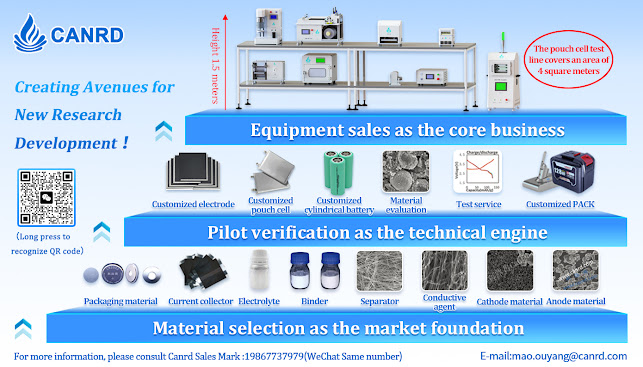【Overview】:
The rolling of battery electrodes involves the friction between the rollers and the electrode, which draws the electrode sheet into the gap between the rotating rollers. During this process, the electrode sheet undergoes compression and deformation. Unlike the rolling of steel, where the rolling process mainly causes the material to extend longitudinally and widen laterally without a change in density, the rolling of battery electrodes focuses on the compaction of active material on both the positive and negative electrode sheets. During this process, the particles undergo migration, rearrangement, and embedding, resulting in reduced voids between particles and a denser arrangement. The purpose is to increase the compaction density of the positive or negative electrode materials. Proper compaction density can increase battery discharge capacity, reduce internal resistance, minimize polarization loss, extend cycle life, and improve the utilization rate of lithium-ion batteries.
【Powder Properties】:
In roller compaction processes, it's essential to describe the basic properties of powders, focusing on two main aspects:
1. Particle Size and Shape: This includes particle size, the shape of the particles, and particle size distribution.
2. Agglomeration Properties:
a) Powder density, defined as the ratio of total mass to total volume. It encompasses three concepts: bulk density, particle density, and true density.
- Bulk Density (or Tap Density): Total volume includes the voids between particles and internal pores within the particles. It is further divided into apparent density (density of particles when freely piled without pressure), tamped density (density achieved by vibration-induced closer packing of particles), and compressed density (density after loading pressure is applied).
- Compressed Density = Surface Density / (Thickness of rolled electrode sheet - Thickness of current collector)
- Particle Density: The volume of all particles combined but only includes the external pores, excluding internal pores.
- True Density: The real volume of particles, excluding both interparticle voids and internal pores.
【Rolled Electrode Sheet and Performance Characteristics】:
1. Effect of Compressed Density on Performance:
Compressed density affects the porosity of the electrode. Higher compressed density leads to lower porosity, smaller pore size, which is disadvantageous for ion transfer and results in decreased high-rate charge/discharge performance.
2. Effect of Compressed Density on Capacity:
Compressed density influences battery capacity by either increasing the capacity of active material per unit mass or increasing the packing of material per unit volume. Higher compressed density leads to reduced internal resistance (improved electrical contact among conductive materials) and diminishes cyclic performance and rate discharge performance (due to lower electrolyte volume fraction, causing inadequate supply during cycling); low-temperature performance initially remains unchanged and then decreases.
3. Effect of Electrode Thickness on Discharge Performance:
If the coating is too thick, the resistance for electron and lithium-ion transport increases, causing some active material to be underutilized, thereby reducing the power density and energy density of the battery.
Electrode porosity and thickness affect the charging performance of the battery. Larger porosity and smaller thickness improve performance.
Particle size of electrode powder affects charging performance. Smaller particles lead to thinner electrode thickness, shorter lithium-ion diffusion paths, and better performance.
——End——
Canrd Brief Introduce: Canrd use high battery R&D technology(core members are from CATL) and strong Chinese supply chain to help many foreign companies with fast R&D.
We provide lab materials, electrodes, custom dry cells, material evaluation, perfomance and test, coin/pouch/cylindrical cell equipment line, and other R&D services.
Email:Eden@canrd.com
Phone/Wechat/WhatsApp/Skype:+86 13713092381
Website : www.canrud.com










No comments:
Post a Comment